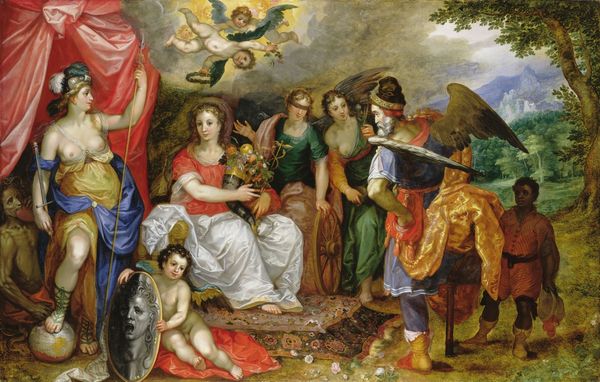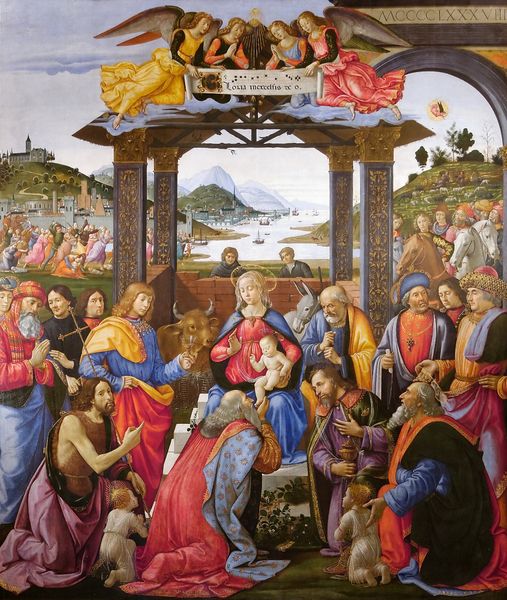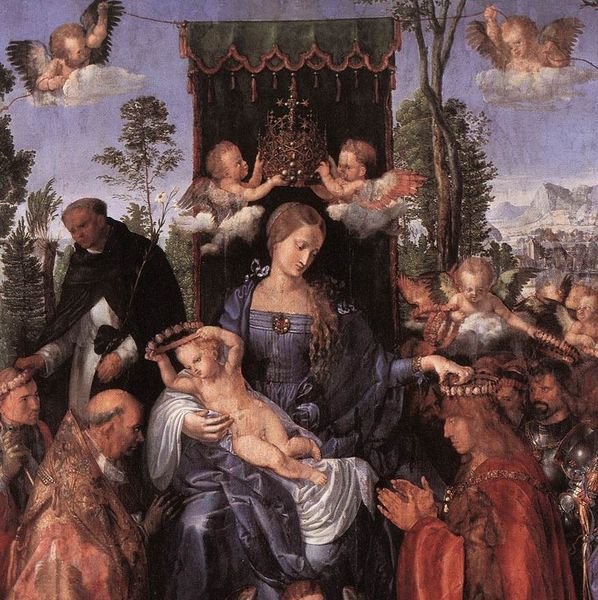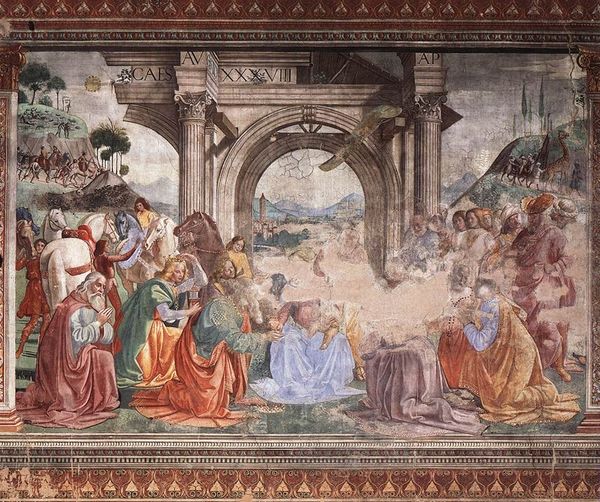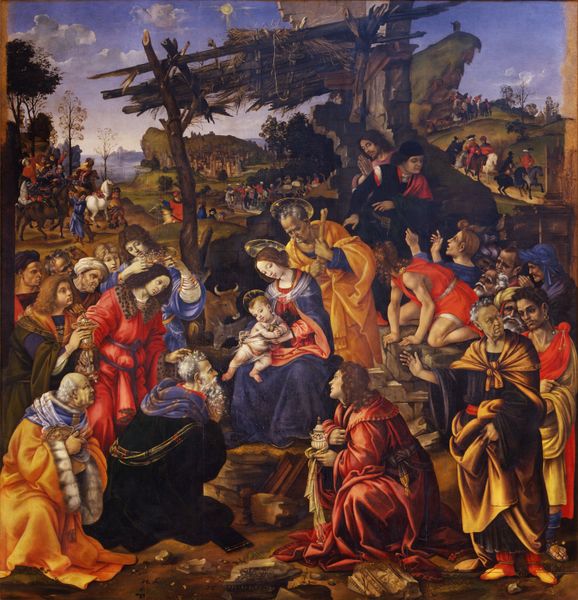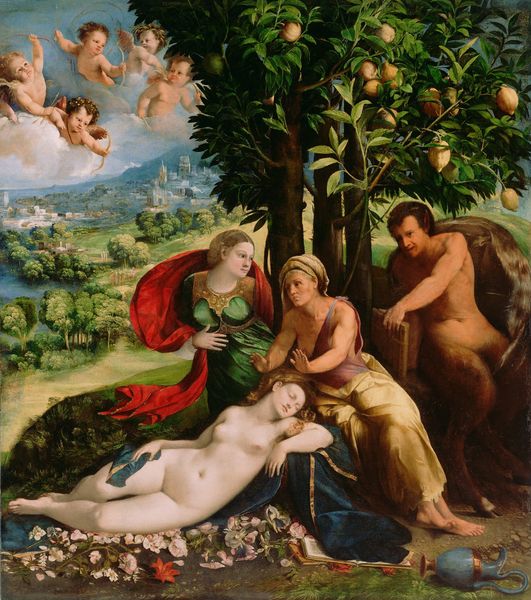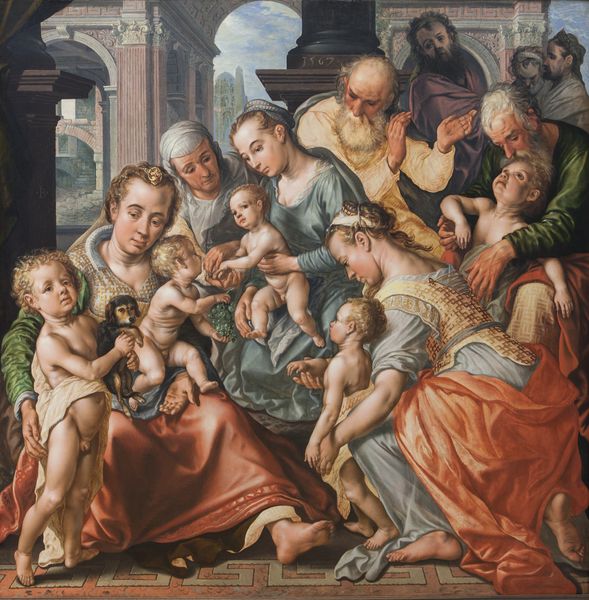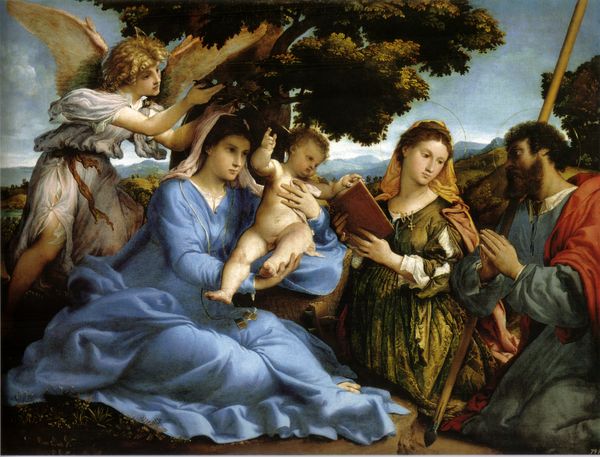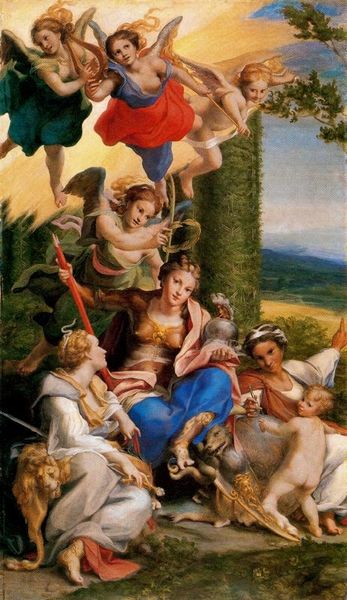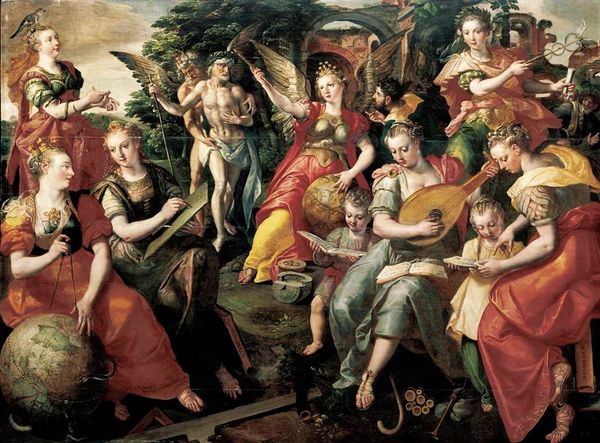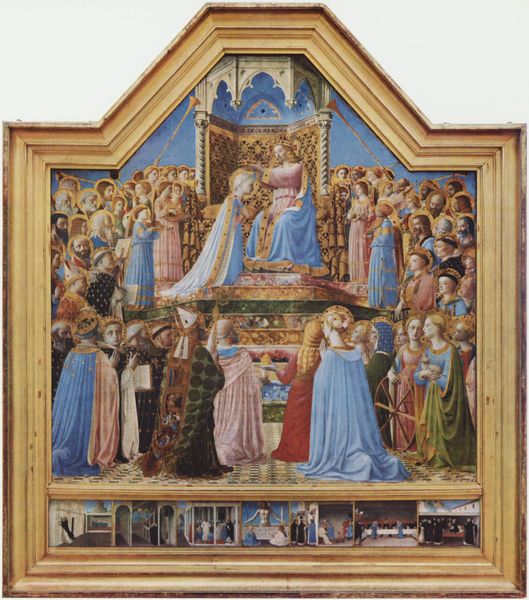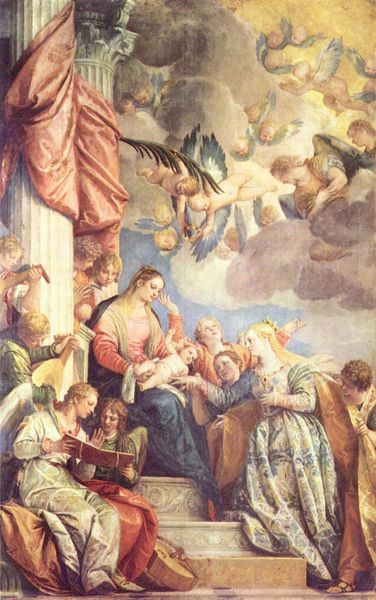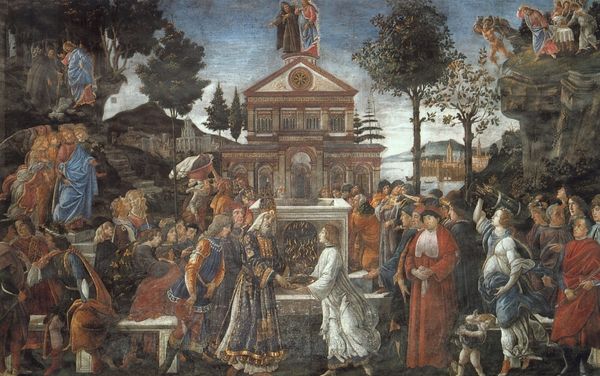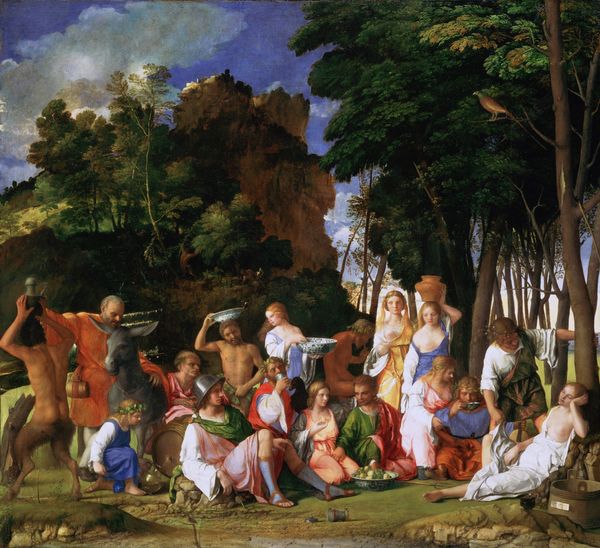
painting, oil-paint
#
portrait
#
high-renaissance
#
painting
#
oil-paint
#
oil painting
#
child
#
group-portraits
#
history-painting
#
italian-renaissance
#
portrait art
#
angel
Dimensions: 162 x 194.5 cm
Copyright: Public domain
Curator: Before us hangs Albrecht Durer’s magnificent "Feast of the Rosary," an oil painting completed in 1506, and presently residing in the National Gallery in Prague. It’s quite the gathering, wouldn’t you say? Editor: A gathering indeed! My first impression? A tapestry of faces, an orchestra of colors… feels like a carefully staged dream, bordering on opulent. Curator: Precisely! Opulence is a key element. The work teems with symbolism linked to the Rosary confraternity – a devotion focused on the Virgin Mary. The beads themselves, passed amongst the figures, represent prayers, unifying earthly and divine realms. Notice how the rosaries become visual echoes, strings connecting diverse individuals. Editor: Ah, the strings that bind! It almost feels democratic in its distribution of attention. Everyone is receiving or giving something – prayers, garlands, crowns. Do you think Dürer was attempting a unified spiritual identity amongst his patrons? Curator: Most certainly. Durer visually encodes social harmony through shared veneration. He was, after all, commissioned to paint the work for the German merchant community in Venice. The painting signifies the communal devotion as well as a marker of their success and cultural sophistication. The very act of commissioning an Italian Renaissance style artwork suggests their sophisticated identity in this new land. Editor: Sophistication layered with anxiety perhaps? Given the historical backdrop, wouldn't a focus on unity among his German patrons be an act of cultural defiance? What could it possibly signify when seen from a Venetian eye? Curator: Absolutely! In Venice, such a blatant display of shared German identity, under the guise of devotion, speaks to anxieties, assertion, perhaps even a nascent cultural nationalism played out through religious iconography. The symbolism of rosary isn't merely prayer; it is interwoven with assertions of identity. Editor: Beautifully said! And it feels rather pertinent now, considering our own negotiations of identity. Looking at it afresh, knowing the artist and patron’s mindset helps one interpret a five-century old canvas to spark vibrant life and conversation in a space like this one. Curator: Agreed. There are layers upon layers, which is one of the aspects that gives this High Renaissance artwork its continued relevance today. Editor: Yes, it resonates… The colors, the expressions – a vibrant reminder of our intertwined human narratives.
Comments
No comments
Be the first to comment and join the conversation on the ultimate creative platform.
